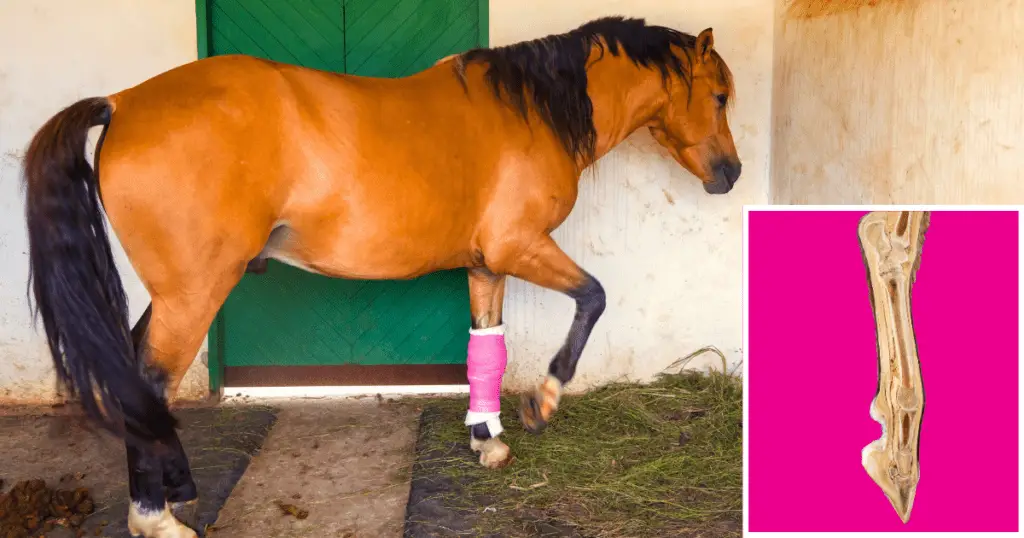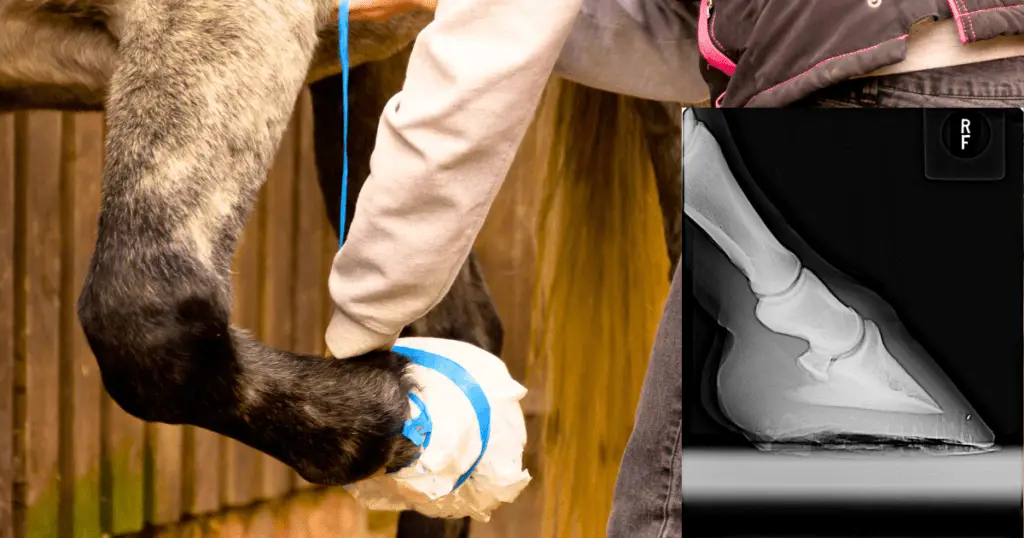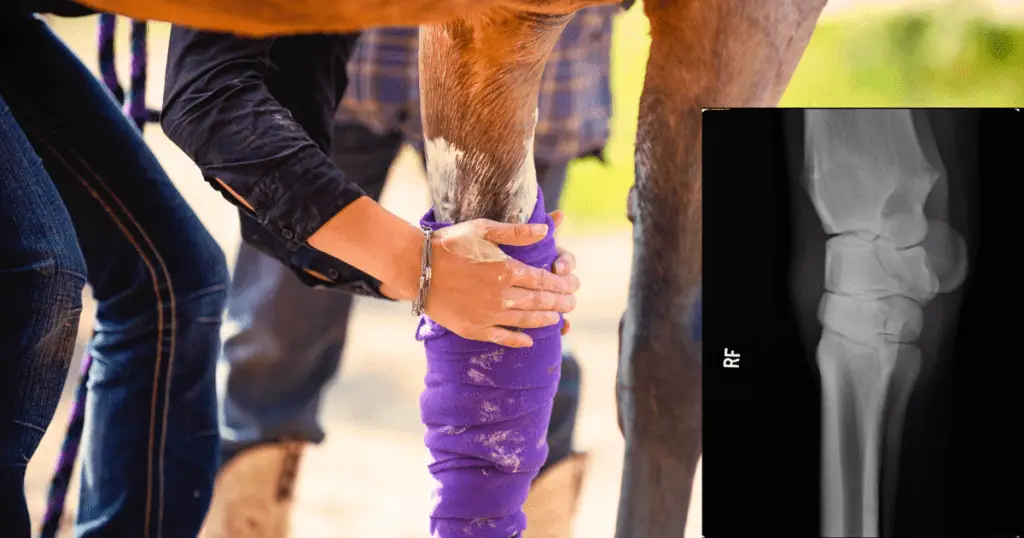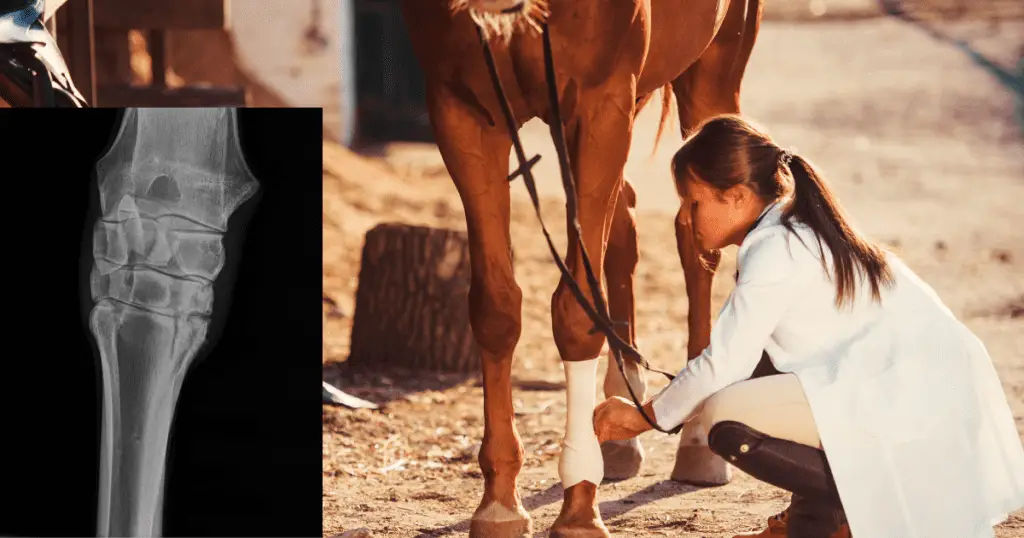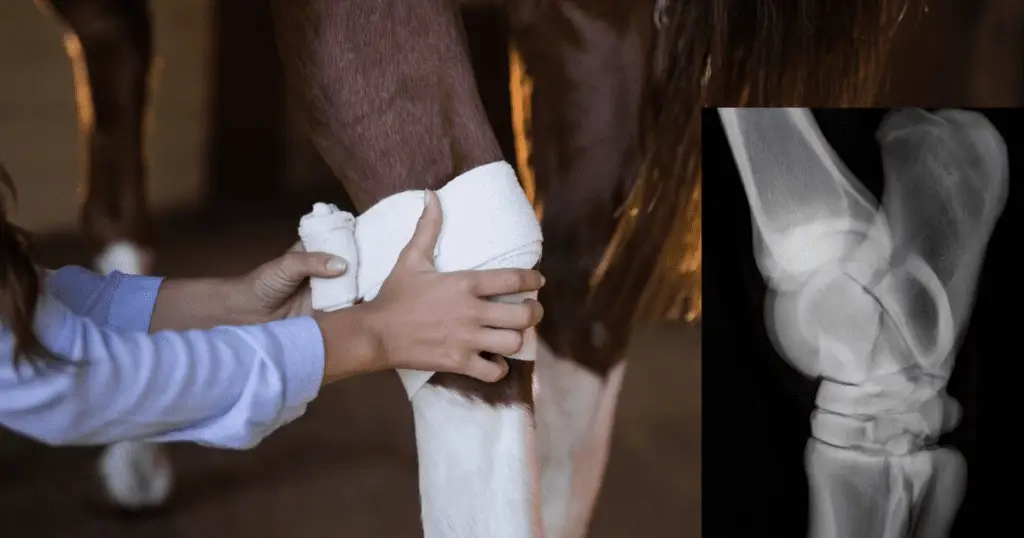How to bandage a horses fetlock – Complete 6 Step guidelines with Video
Learning How to bandage a horses fetlock is an important skill that all horse owners, trainers, and handlers should learn. If your horse has injured their fetlock and has a laceration- make sure you investigate thoroughly to determine if any important structures are damaged or if the joint is involved first. If you are unsure please contact your nearest Vet immediately as a good prognosis requires immediate intervention. Wrapping the wound before a vet attends, or for transport to a vet is important to prevent contamination etc. Proper bandaging can also help protect the horses lower limb from injuries, reduce swelling, and provide support during exercise. Here are the steps to follow when bandaging a horses fetlock: Step By Step Guideline: Bandage a Horses Fetlock Step 1: Gather the Necessary Materials To bandage a horse fetlock, you will need the following materials: Make sure that all the materials are clean and free of dirt or debris. Step 2: Clean and Dry the Leg Before bandaging the fetlock. you should clean and dry the horses leg thoroughly. If there is a wound present use a disinfectant to clean the area such as betadine or chlorhexidine . If wrapping for support and there is no wound allow the leg to dry completely before proceeding. Step 3: If there is a wound present apply the protective padding over the wound, such as melolin or poultice and then apply cotton wool over this, making sure to not put too much pressure on the sesamoid bones at the back of the fetlock. If no wound, just apply the padding bandage over the fetlock. Step 4: Wrap the Bandage Take the clean bandage wrap and wrap it around the horses leg, starting just below the fetlock joint. Make sure to wrap the bandage in a spiral pattern, covering the fetlock area and the padding completely. Each turn of the bandage should overlap the previous one by about half of its width. Continue wrapping the bandage up the leg, stopping just above the fetlock about 15cm. Step 5: Apply the Elastic Bandage Once you have wrapped the leg with the bandage/ padding wrap, it’s time to apply the elastic/ vet wrap bandage. The elastic bandage will provide additional support to the fetlock and help keep the bandage wrap in place. Begin by attaching the elastic bandage to the bandage wrap just below the fetlock joint, making sure that it is snug but not too tight. Wrap the elastic bandage around the leg in a spiral pattern, covering the bandage wrap completely. Each turn of the elastic bandage should overlap the previous one by about half of its width. Continue wrapping the elastic bandage up the leg, stopping just above the fetlock. Step 6: Secure the Bandage Once you have applied the elastic bandage with some adhesive tape. Make sure that the tape is not too tight. Trim any excess bandage or tape with scissors. Video: How To Bandage A Horses Fetlock Conclusion In conclusion, bandaging a horse’s fetlock is a necessary skill for anyone who works with horses. It’s important to take the time to learn how to bandage a fetlock properly to avoid injury and provide support during exercise. Remember to always use clean materials and to make sure that the bandage is snug but not too tight. A poorly applied bandage can often be worse than no bandage at all. If the bandage is too tight it will restrict blood flow and this damages tissue. A bandage that is too loose will rub and cause damage to the skin or healing bed if there is a wound present and will offer no support. If you have any doubts or concerns, don’t hesitate to seek the advice of a veterinarian. Also Read:
How to bandage a horses fetlock – Complete 6 Step guidelines with Video Read More »

